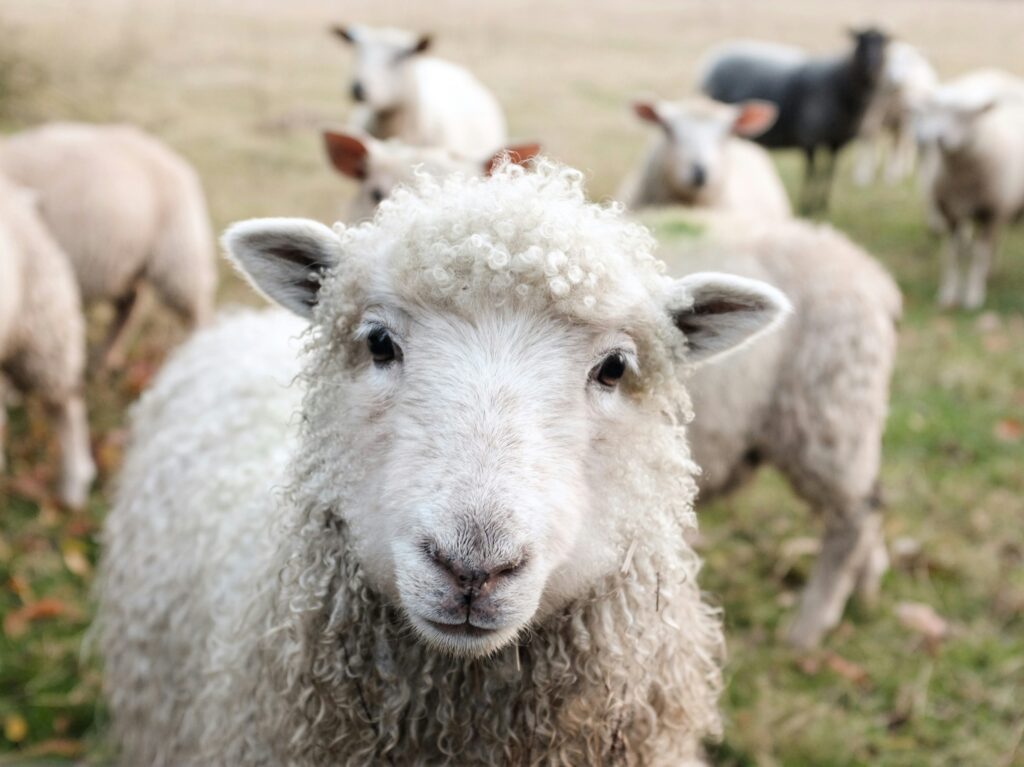
Sheep
From initial registering your sheep through to the final product packaging and labelling.
Updated 9 May 2024
Managing sheep
As a sheep farmer, you must manage your flock actively to ensure their welfare. Sheep kept indoors should be checked on at least once a day, and you should consider how you will manage sheep when they are on pasture.
Tagging
You must tag all your sheep by before they are 9 months old (6 months if kept indoors), or they leave your farm.
There are two types of identifier tags: electronic and visual. Both tags come in different types (e.g., ear tag), and you can read more about tag types here. To buy tags, you need your flockmark and CPH number. You can only buy from suppliers approved by DEFRA: see the list of approved tag suppliers.
Tagging rules for different sheep:
- Sheep kept beyond 12 months of age need both an electronic and a visual tag. These tags have the animal’s individual identifier number – you will get it from the supplier when ordering tags.
- Lambs going for slaughter need an electronic tag, which only has your flockmark.
You must replace any lost tags within 28 days from noticing that they are missing. There are specific rules for purchasing and recording replacement tags.
The Scottish Government has detailed guides on tagging sheep, including advice on how to tag:
- Sheep and goat identification and traceability, Scottish Government
- Livestock identification and traceability: Sheep and goats, Scottish Government
Managing grassland
Pasture is an important nutrient source for sheep, but overgrazing and poor management degrade grassland. Planning how to manage productive grassland will not only support your sheep’s diet but also helps with disease prevention.
You may also grow grass or other crops as forage for your sheep, and there are services available to test the nutrient content of your silage.
Useful resources to get started on grassland management:
- Grassland productivity for livestock, Soil Association
- ‘Grassland’, Farm Advisory Service
- ‘Grassland management’, Scottish Rural College
- Better Grassland Management for Scottish beef and lamb producers, Quality Meat Scotland
- Pasture for Life
Public access
In Scotland, members of the public have access rights over open pasture. You must not allow working dogs to intimidate people, and where a core path or public right of way goes through your land, you cannot obstruct it.
Read more:
- Public Access and Land Management, Natural Heritage Management
- ‘Unfenced grassland with farm animals’, Scottish Outdoor Access Code
Protected areas
If your land has any semi-natural areas or uncultivated land, you cannot modify these without first asking your local planning authority whether an Environmental Impact Assessment is needed.
If your grassland is within a Site of Special Scientific Interest (SSSI), you need to check if there are any management guidelines for grassland habitat in the site and follow them. Find out more and see a map of SSSIs on NatureScot.
Feeding
Even if your sheep mainly feed by grazing, you might need to sometimes give them additional feed. For example, pastures might not have enough grass during harsh winter conditions and pregnant ewes need more nutrition.
Body Condition Scoring is a useful technique for understanding if your sheep’s diet is sufficient (see ‘Body Condition Scoring’).
You can grow and store your own sileage as feed. Testing the quality of sileage may be useful to ensure it is nutritious enough.
To store and use sheep feed, you must register as a feed business – see ‘Feed business registration’.
Read more:
- Understanding Feed for Beef Cattle & Sheep, Farm Advisory Service
- Ruminant Nutrition and Forage Analysis, Farm Advisory Service
- Tried & Tested: Feed planning for cattle and sheep, Agricology
Lambing
After being mated with rams in October-November, ewes in the same flock usually lamb over several weeks in the spring. Depending on the location of your farm and your flock management, you might bring the ewes indoors or decided to keep them outside for lambing if there is sufficient shelter.
During lambing season, you must stay vigilant in monitoring whether any of the ewes require assistance when giving birth and call the vet if necessary.
Read more:
Shearing
Every sheep over a year old should be shorn annually. You can shear your flock yourself if you have the necessary skills, of book a shearing contractor. When scheduling this, you must consider the weather conditions – for example, you should not shear sheep in the winter.
Read more in the National Sheep Association guidance on shearing.
British Wool provides training courses and accreditation in shearing.